In Pennsylvania, have you ever wondered what kind of bird is visiting your backyard? What are the common backyard birds in Pennsylvania? Do you need help recognizing these birds?
A bird feeder can be a great source of enjoyment, but it’s even better if you know who’s visiting.
You can now learn which birds are most common in Pennsylvania, as well as whether they visit your feeders.
To learn more about Pennsylvania backyard birding, continue reading this article.
When it comes to bird checklists, these are the species that are most commonly seen in Pennsylvania throughout the summer (June and July) as well as winter (December and January).
In order to provide you with the birds in Pennsylvania that you are most likely to see at your feeder or in your backyard, we eliminated the species that aren’t as common.
Throughout the year, the birds that flock to backyards in Pennsylvania vary.
we’ll take a closer look at 25 of the most common birds found in Pennsylvania, providing you with a guide to identifying and appreciating these winged wonders.
| Image | Bird | Features | Price |
|---|---|---|---|
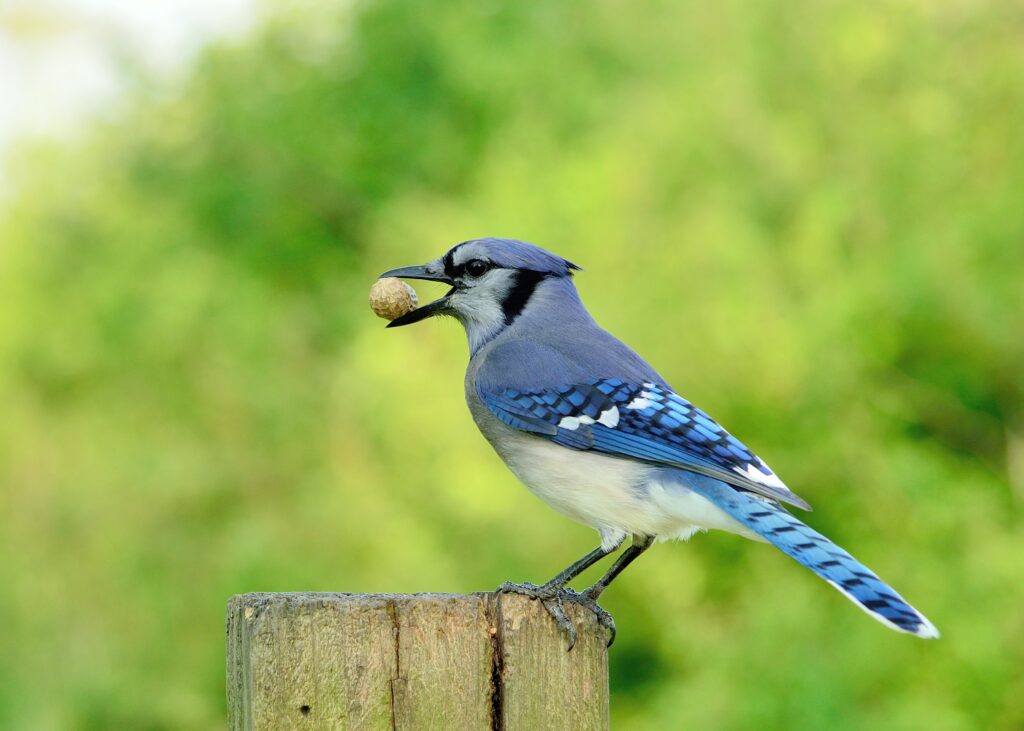 |
| 9.7 | Check Price |
 |
| 9.5 | Check Price |
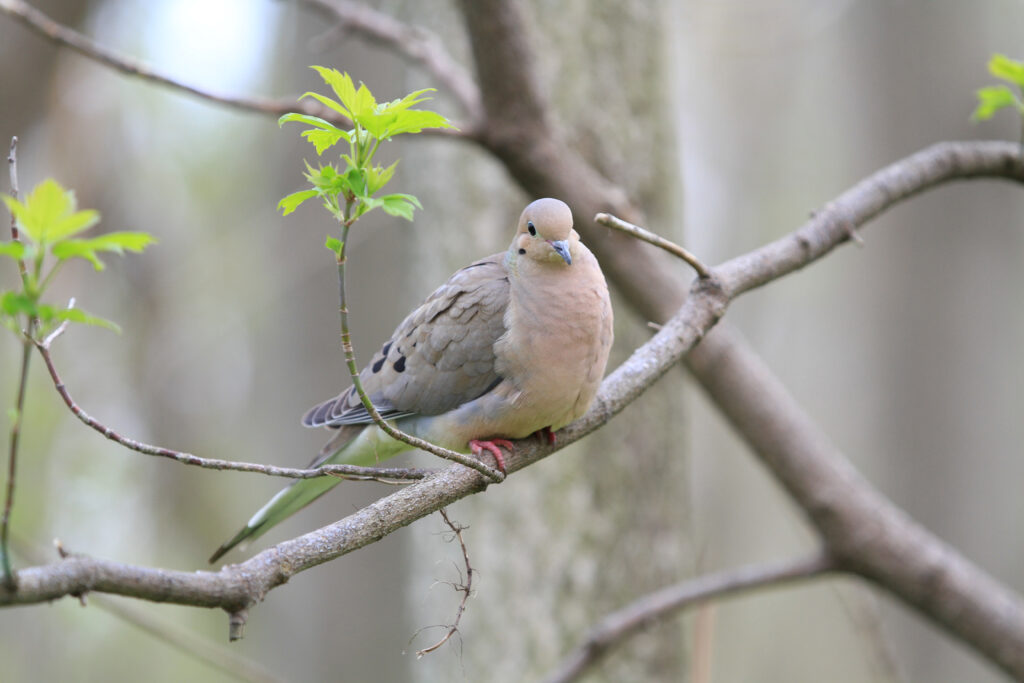 |
| 9.1 | Check Price |
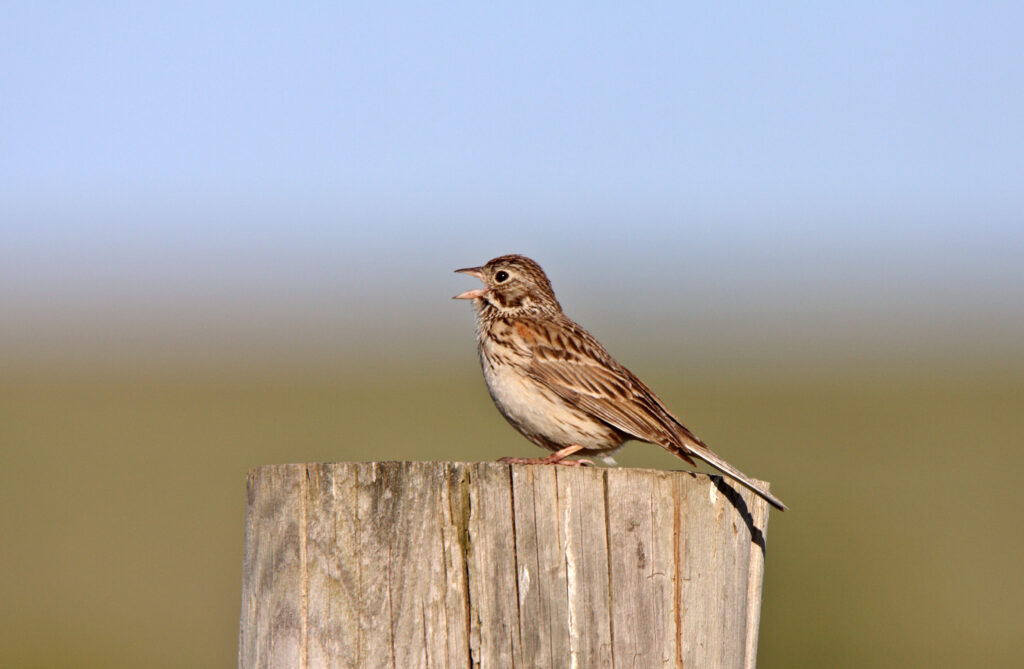 |
| 8.8 | Check Price |
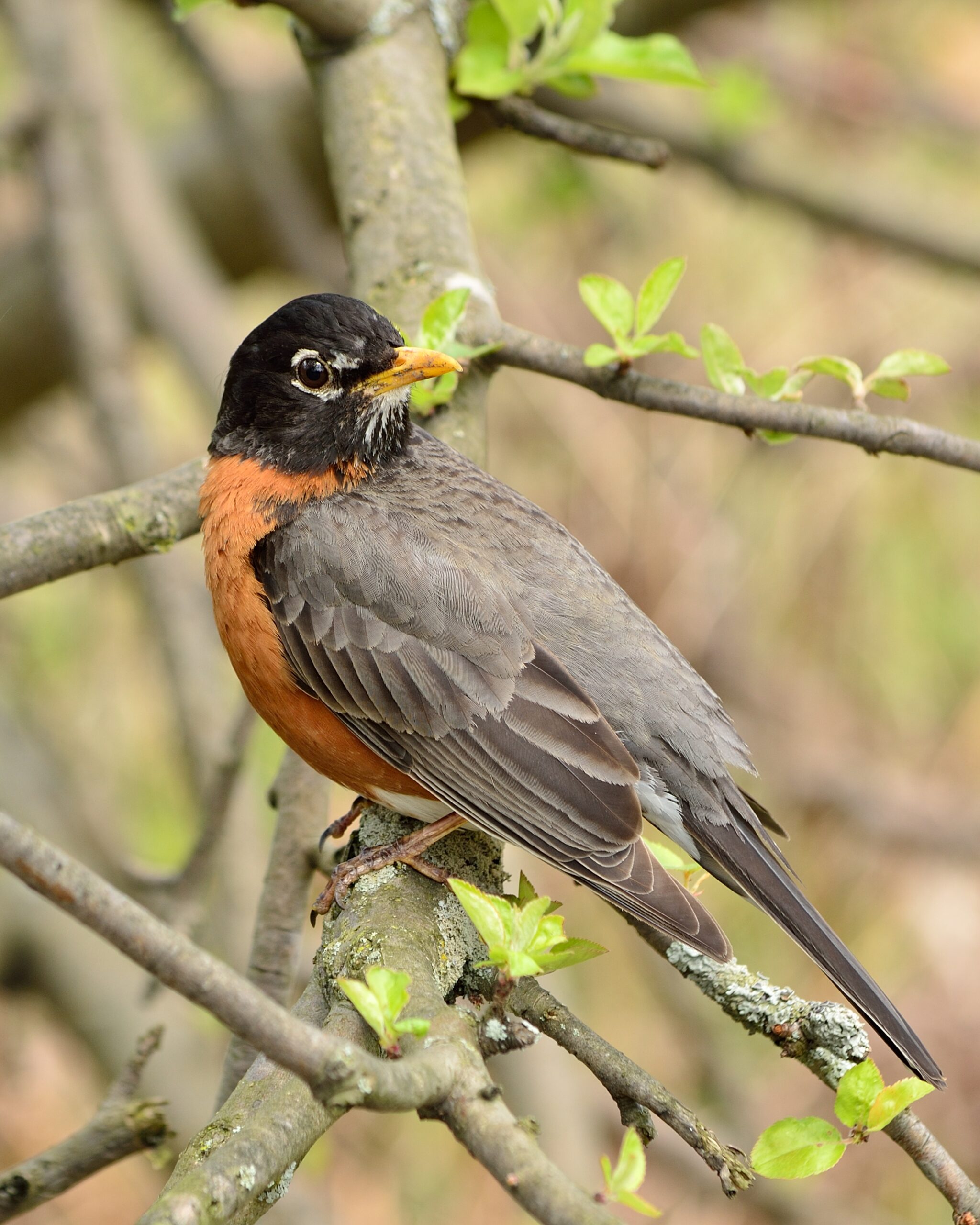 |
| 8.6 | Check Price |
 |
| 8.2 | https://birdadviser.com/birds-of-pennsylvania/#6_American_Crow |
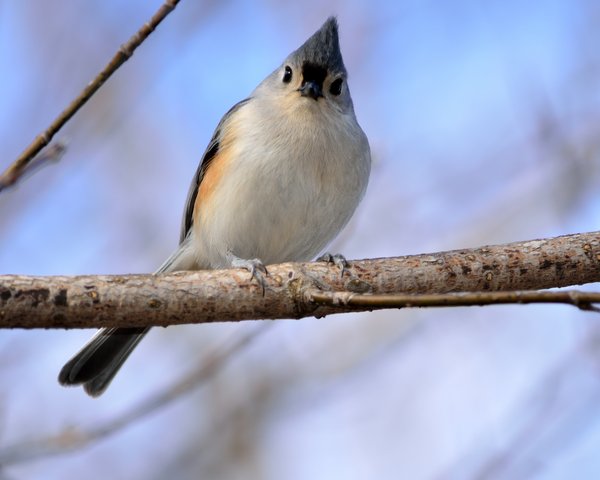 |
| 8 | Check Price |
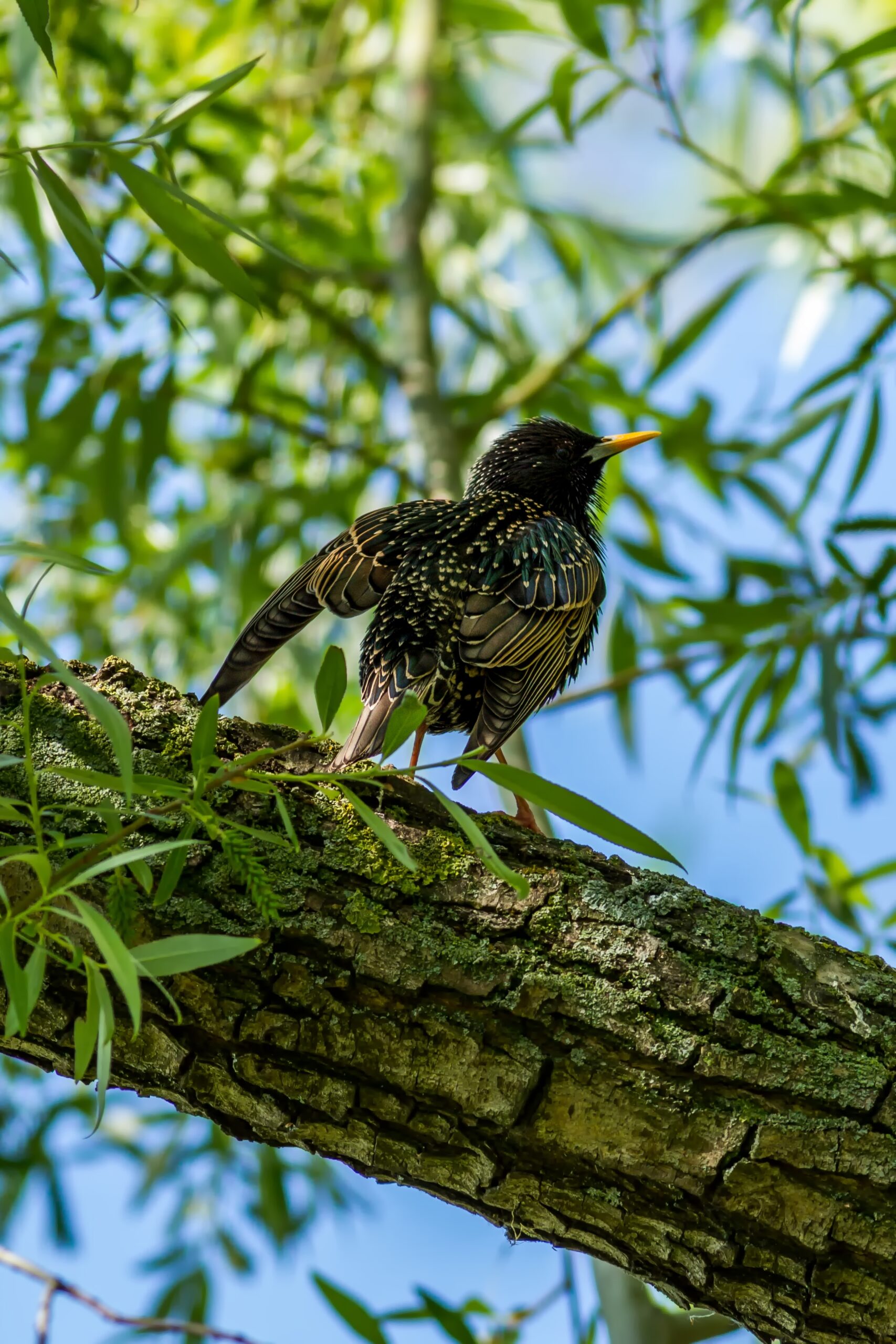 |
| 7.7 | Check Price |
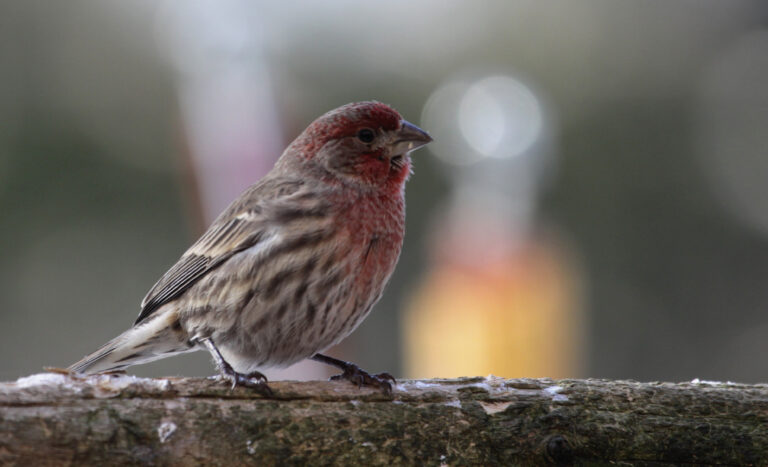 |
| 7.4 | Check Price |
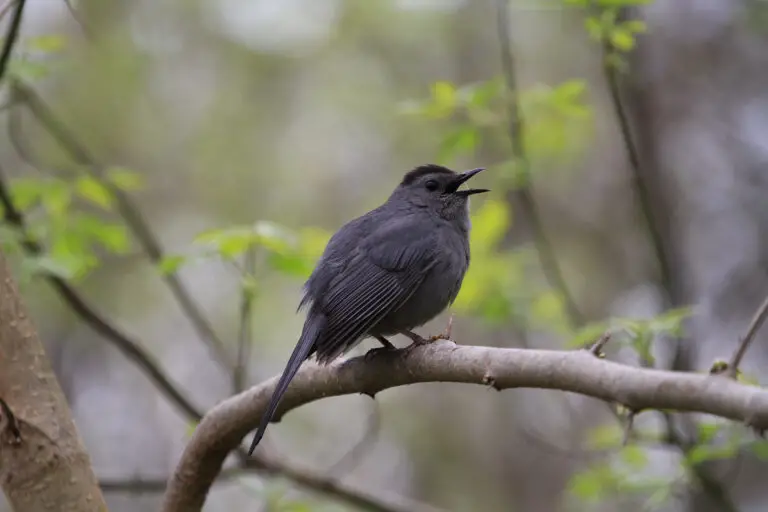 |
| 7.2 | Check Price |
 |
| 9.5 | Check Price |
 |
| 9.5 | Check Price |
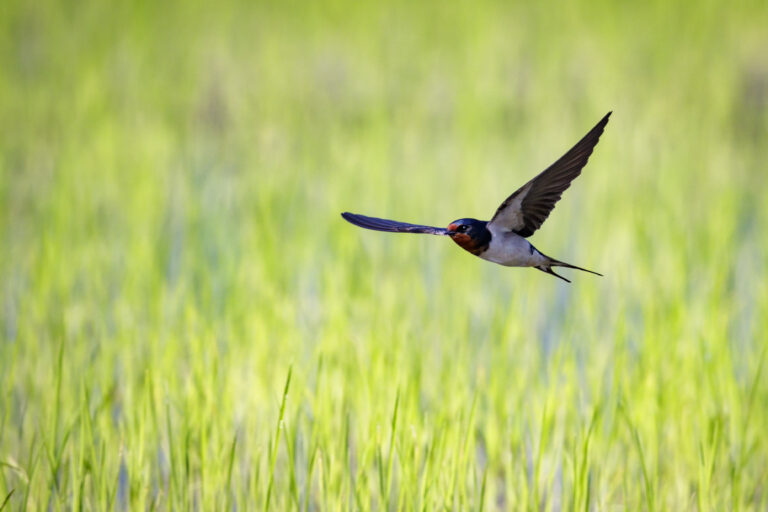 |
| 9.5 | Check Price |
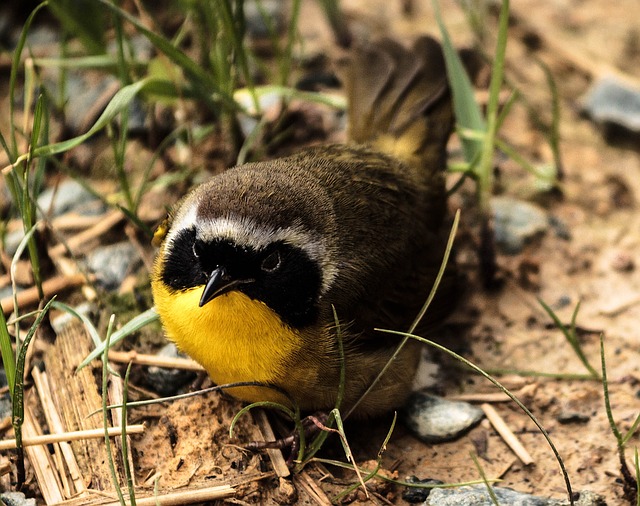 |
| 9.5 | Check Price |
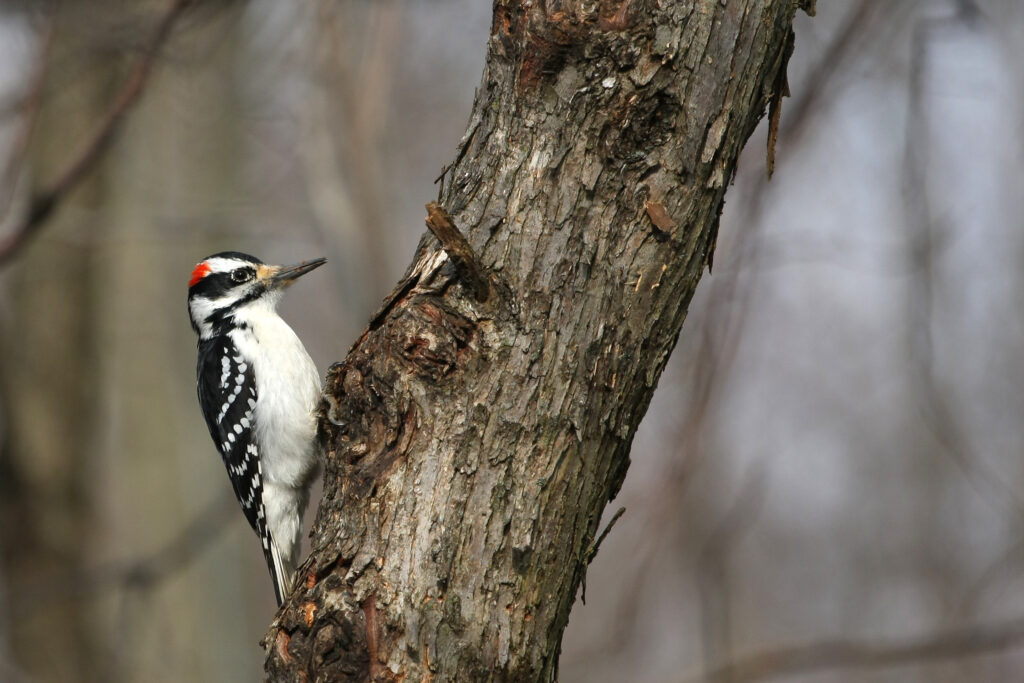 |
| 9.5 | Check Price |
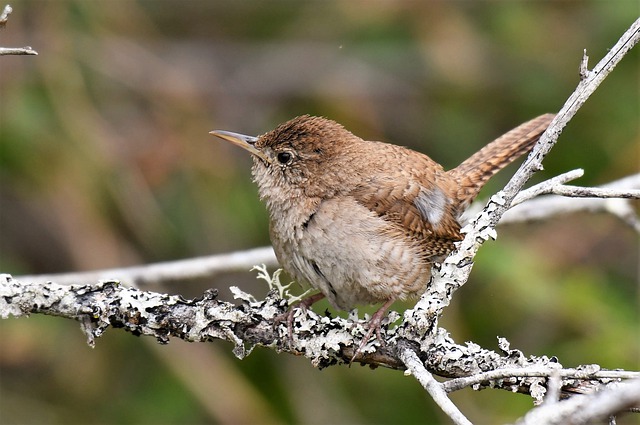 |
| 9.5 | Check Price |
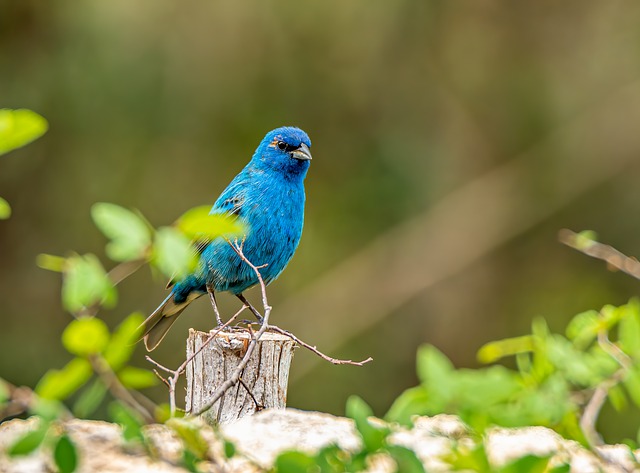 |
| 9.5 | Check Price |
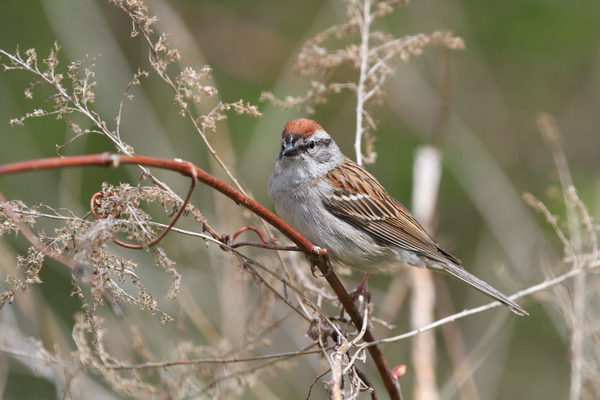 |
| 9.5 | Check Price |
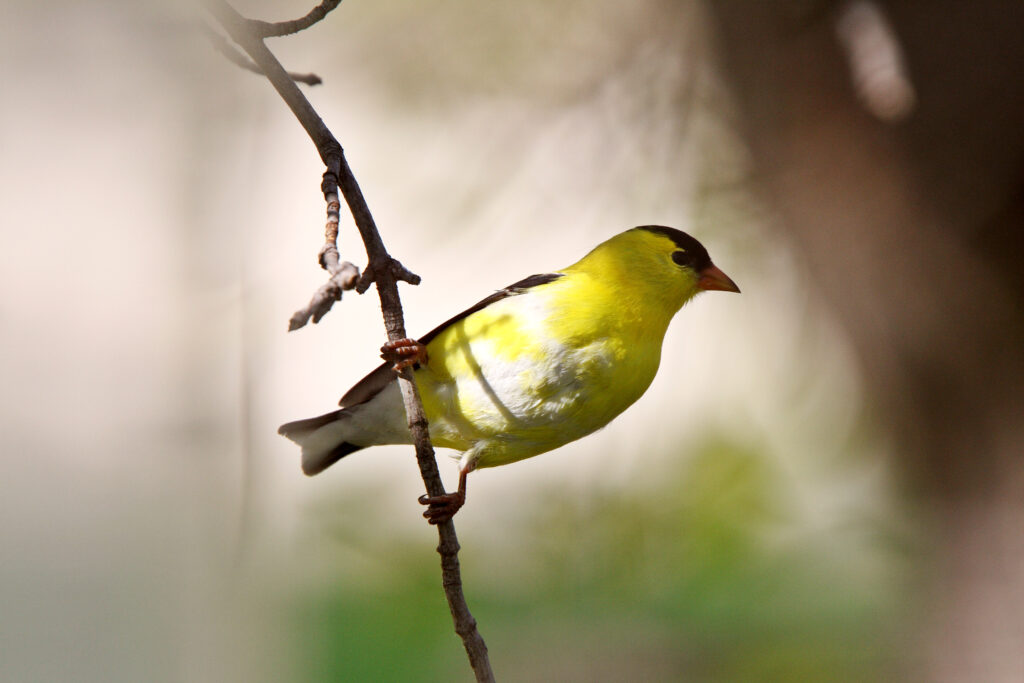 |
| 9.5 | Check Price |
 |
| 9.5 | Check Price |
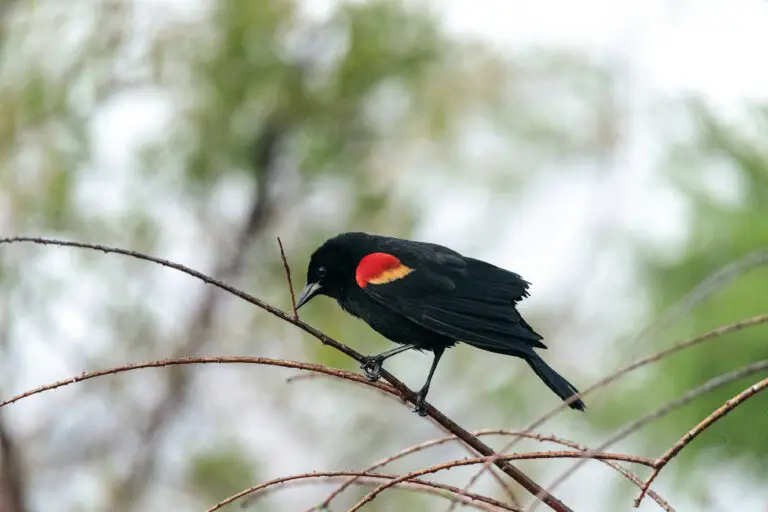 |
| 9.5 | Check Price |
 |
| 9.5 | Check Price |
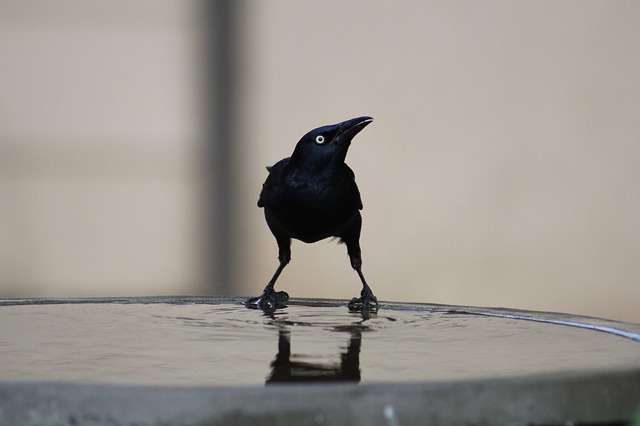 |
| 9.5 | Check Price |
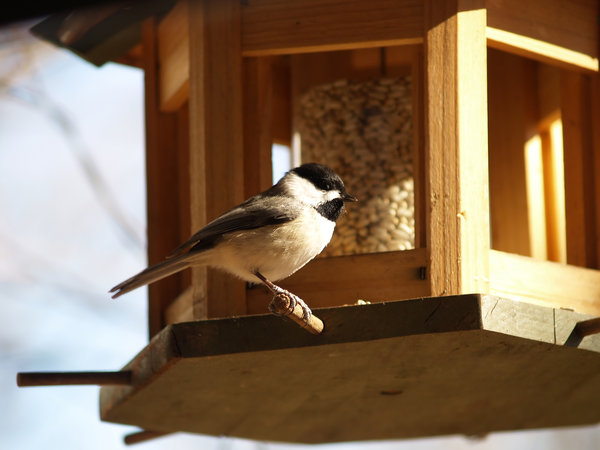 |
| 9.5 | Check Price |
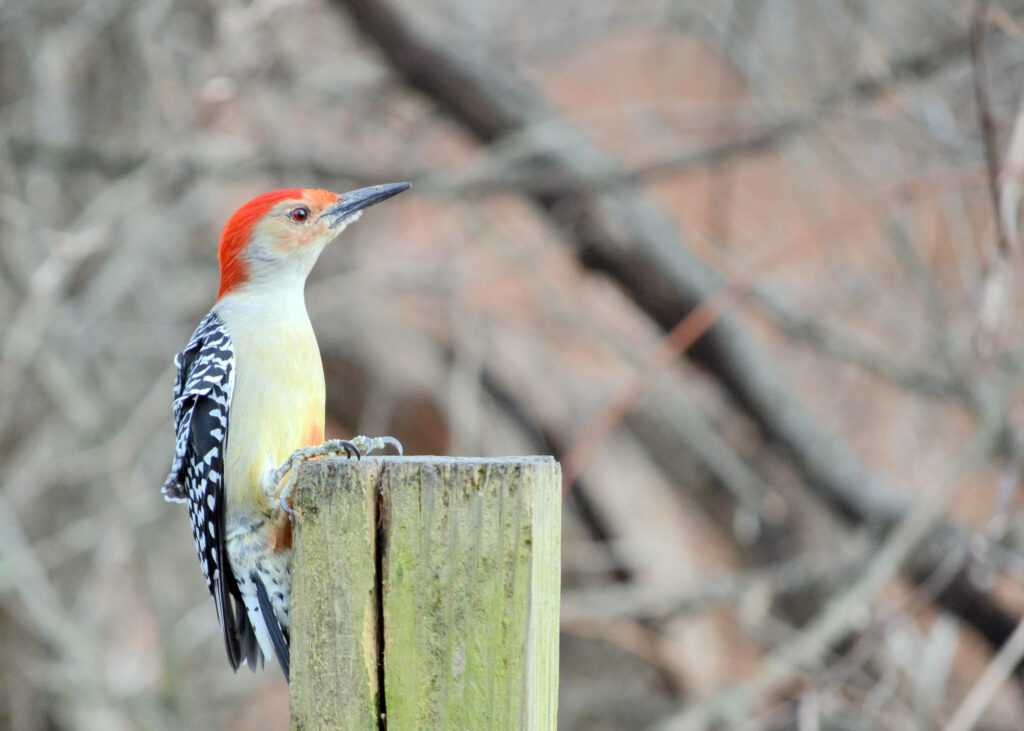 |
| 9.5 | Check Price |
If you don’t have the time to read the whole article, check out this video for a quick understanding.
Common Birds in Pennsylvania
1. Blue Jay

The scientific name for the Blue Jay is Cyanocitta cristata.
Blue Jays is a medium-sized bird, measuring around 9 – 12 inches (23 – 30 cm) in length and weighing around 2.5 – 3.5 ounces (70 – 100 grams).
The wingspan of a Blue Jay is around 13 – 17 inches (33 – 43 cm).
Blue Jays have a blue erect crown, blue and black backs, and white undersides, making them common songbirds.
They are loud birds that move in huge flocks throughout the Great Lakes and Atlantic coast, eating acorns when available.
They live in woods and consume acorns; therefore they want to be near oak trees. They’re also spotted around feeders in backyards.
Insects, nuts & seeds, and grain are among the foods they consume. They could also steal nestlings or eggs from nests.
In addition to peanuts or sunflower seeds, suet is an excellent technique to attract blue jays to your yard although they prefer hopper or tray feeders.
A birdbath will be appreciated as well. Throughout the year, blue jays may be seen in Pennsylvania.
Below are the characteristics of the Blue Jay,
| Scientific Name | Cyanocitta cristata |
| Length | 9.8 – 11.8 inches (25 – 30 cm) |
| Weight | 2.5 – 3.5 ounces (70 – 100 g) |
| Wingspan | 13 – 17 inches (33 – 43 cm) |
| Habitat | wooded areas, gardens, and parks |
| Food | omnivorous |
| Nesting | trees |
| Behavior | aggressive and social |
2. Northern Cardinal

The Northern Cardinal (Cardinalis cardinalis) is a large, robust songbird with a distinctive crest on top of its head.
The male has bright red plumage, a black mask around the eyes, and a large, thick bill.
The female is a duller red-brown color with a red crest and a smaller bill.
They are both around 9 – 11 inches (23 – 28 cm) in length and weigh around 2.5 – 3.5 ounces (70 – 100 grams).
The wingspan of a Northern Cardinal is around 11-13 inches (28 – 33 cm).
Cardinals with black faces and vivid red bodies pop against the white winter background.
With their brown coloration, bright brown crests, red accents, and red beaks, the females are likewise a bit conspicuous.
During the breeding season, Northern Cardinals will occasionally attack their own reflection in order to compulsively protect their territories.
If you want to attract more Northern Cardinals to your backyard feeders, you may use peanut hearts, sunflower seeds, milo, and millet.
They’ll eat from big tube feeders, hoppers, platform feeders, and food strewn over the ground.
Northern Cardinals can be seen all year in Pennsylvania.
Below are the characteristics of the Northern Cardinal,
| Scientific Name | Cardinalis cardinalis |
| Length | 8.3 – 9.1 inches (21 – 23 cm) |
| Weight | 2.6 – 3.5 ounces (74 – 100 g) |
| Wingspan | 11 – 12 inches (28 – 30 cm) |
| Habitat | woodlands, thickets, and suburban gardens |
| Food | seeds, fruits, insects and spiders |
| Nesting | trees, shrubs |
| Behavior | strong pair-bonding and territorial behavior |
3. Mourning Dove

Mourning Doves (Zenaida macroura) are a medium-sized bird, measuring around 12 – 14 inches (30 – 35 cm) in length and weighing around 4 – 5 ounces (113 – 142 grams).
The wingspan of a Mourning Dove is around 14 – 18 inches (35 – 46 cm)
Mourning doves have slender heads, rounded bodies, and long tails.
The wings are light brown with black markings. Perching on telephone lines and foraging for seeds on the ground in meadows, farms, and backyards, they can be seen.
You’ll find Mourning Doves in wide-open places or on the edges of densely forested areas.
Mourning Doves may be found across the lower 48 states throughout the year, however, they may move after reproducing in the far north.
By sprinkling millet on the ground or using platform feeders, you may attract more Mourning Doves to your yard.
You may expect them to eat peanut hearts, black sunflower seeds, and nyjer among other things.
Mourning Doves are widespread year-round in Pennsylvania, but they are more visible in the summer.
Below are the characteristics of the Mourning Dove,
| Scientific Name | Zenaida macroura |
| Length | 10 – 12 inches (25 – 30 cm) |
| Weight | 4 – 5 ounces (110 – 140 g) |
| Wingspan | 14 – 17 inches (36 – 43 cm) |
| Habitat | open country, pastures, and residential areas |
| Food | fruits, berries and insects |
| Nesting | trees, shrubs |
| Behavior | – |
4. Song Sparrow

The Song Sparrow (Melospiza melodia) is a medium-sized sparrow, measuring around 6 – 7 inches (15 – 18 cm) in length and weighing around 0.9 – 1.4 ounces (25 – 40 grams).
They have a brown streaked upper body, a dark brown streaked crown, a white throat and a reddish-brown breast.
They have long tails and short, rounded wings.
They have a thick bill and a distinctive dark spot on the breast.
They have a wide range of plumage variations, but the streaked breast and crown are consistent.
Song sparrows aren’t as spectacular as other backyard birds, but they employ their nearly constant song to attract mates in the spring and summer.
In open, shrubby, and damp environments, they are commonly observed sitting on a low shrub and singing.
They’re frequently seen at bird feeders in the backyard.
Beetles, caterpillars, midges, spiders, and earthworms are just a few of the insects and plants that Song Sparrows eat.
The other items they’ll consume include buckwheat and sunflower seeds as well as raspberries, wheat, blackberries, wild cherries, and rice.
Use black oil sunflower seeds on platform feeders together with cracked corn and nyjer to increase the number of song sparrows attracted to your backyard feeding stations.
Below are the characteristics of the Song Sparrow,
| Scientific Name | Melospiza melodia |
| Length | 6-7 inches (15-18 cm) |
| Weight | 0.9-1.2 ounces (25-34 g) |
| Wingspan | 8-10 inches (20-25 cm) |
| Habitat | wetlands, fields, woodlands |
| Food | seed, insects, spiders, and some fruits |
| Nesting | shrubs, trees, and on the ground |
| Behavior | – |
5. American Robin

The American Robin (Turdus migratorius) is a medium-sized songbird, measuring around 10 – 11 inches (25 – 28 cm) in length and weighing around 2.5 – 3.5 ounces (70 – 100 grams).
They have a reddish-orange breasts, a gray back and head, and a white belly.
They have a white ring around the eye, a thin pointed bill, and a long tail.
They have a distinctive and distinctive white ring around the eye, which can help to easily identify them.
A frequent lawn bird is the American Robin, which eats earthworms.
There are no white parts on their heads, but they have black backs and red or orange breasts.
Because they prefer to roost in trees during the winter, you’re more likely to see them in your backyard starting in the spring.
These birds live in a wide range of habitats, including wooded and mountainous areas as well as open areas like parks and lawns.
All of these items may be utilized to attract additional American Robins to your yard.
It is best to use platform feeders or food that is distributed on the ground.
Below are the characteristics of the American Robin,
| Scientific Name | Turdus migratorius |
| Length | 9.4 – 11 inches (24 – 28 cm) |
| Weight | 2.6 – 3.5 ounces (74 – 100 g) |
| Wingspan | 12 – 15 inches (30 – 38 cm) |
| Habitat | woodlands, fields, residential areas, and suburban areas |
| Food | insect and fruits |
| Nesting | trees, shrubs, and sometimes on the ground |
| Behavior | loud, cheerful songs |
6. American Crow

The American Crow (Corvus brachyrhynchos) is a large, all-black bird, measuring around 17 – 20 inches (43 – 51 cm) in length and weighing around 12 – 24 ounces (340 – 680 grams).
They have distinctive black plumage, a thick bill, and a fan-shaped tail.
They have robust bodies, and their wings are broad and rounded.
They have distinctive black plumage, which can help to easily identify them.
Americans call them crows because of their enormous size and loud cawing sound.
Their habitats include trees, forests, fields, beaches, and urban areas where they can be found in large numbers.
They eat a wide variety of foods and prefer to graze on the ground, where they eat earthworms, insects, seeds, and fruit.
Fish, mussels, juvenile turtles, and clams, as well as nestlings and eggs from a number of bird species, are also eaten by these creatures.
A huge flock of up to two million birds of the American Crow congregates in communal roosts during the colder months of the year to sleep.
If you scatter peanuts in your backyard, you can attract more American Crows, but if you leave garbage or pet food out, they can become a nuisance.
Below are the characteristics of the American Crow,
| Scientific Name | Corvus brachyrhynchos |
| Length | 17 – 21 inches (43 – 53 cm) |
| Weight | 12 – 57 ounces (340 – 1600 g) |
| Wingspan | 39 – 43 inches (99 – 109 cm) |
| Habitat | woodlands, fields, residential areas, and suburban areas |
| Food | insects, fruits, seeds, carrion, and garbage |
| Nesting | trees, shrubs, and sometimes on the ground |
| Behavior | intelligence and social |
7. Tufted Titmouse

The Tufted Titmouse (Baeolophus bicolor) is a small to medium-sized bird, measuring around 6 – 8 inches (15 – 20 cm) in length and weighing around 0.8 – 1.1 ounces (23 – 31 grams).
They have distinctive blue-gray plumage, a white belly, and a black crest on their head.
They have a thick, black bill and a short tail.
They have round heads, plump bodies, and short tails.
They have a distinctive crest on their head, which can help to easily identify them.
The Tufted Titmouse has a cute grey crest and large eyes and is often seen with chickadees, nuthatches, and woodpeckers in flocks.
They are found in woodlands, parks, and backyard feeders, and can be aggressive toward smaller birds.
Its major prey in the summer months is the caterpillars and beetles that feed on the wasps, ants, and spiders. Seeds, nuts, and berries are also eaten, with shelled seeds being hoarded.
It is possible to attract Tufted Titmouse to your backyard feeding stations by using sunflower seeds, suet, and peanuts.
Platform feeders will also be consumed. To attract a breeding pair, consider erecting a nest box.
Below are the characteristics of the Tufted Titmouse,
| Scientific Name | Baeolophus bicolor |
| Length | 6 – 7 inches (15 – 18 cm) |
| Weight | 0.8 – 1.2 ounces (22 – 34 g) |
| Wingspan | 9 – 11 inches (23 – 28 cm) |
| Habitat | woodlands, deciduous forests, and residential areas |
| Food | seed and insect |
| Nesting | trees, shrubs, and sometimes on the ground |
| Behavior | strong pair-bonding and territorial |
8. European Starling
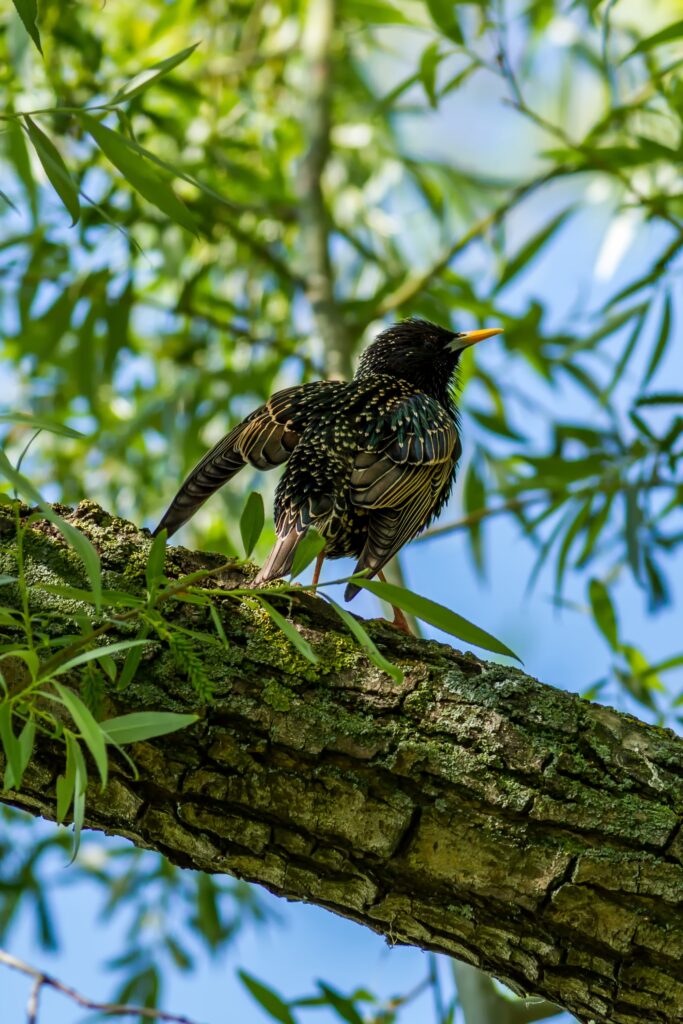
The European Starling (Sturnus vulgaris) is a medium-sized bird, measuring around 8 – 9 inches (20 – 23 cm) in length and weighing around 1.4 – 1.8 ounces (40 – 50 grams).
The wingspan of a European Starling is around 11-15 inches (28-38 cm).
They have a glossy black plumage with purple, green, and bronze iridescence.
The bill, legs, and eyes are yellow.
They have a distinctive short tail and a triangular shape when in flight.
They have distinctive black plumage, which can help to easily identify them.
European starlings are a non-native species that has become one of the most common songbirds in the United States.
Some of their favorite foods are blackberries and sumac. They also enjoy cherries and other fruits like holly berries.
Some people consider these birds to be pests because of their aggressive behavior.
In flocks, they can be observed sitting on trees or soaring through fields.
More European Starlings might be attracted to your garden if you use cracked corn and suet.
Below are the characteristics of the European Starling,
| Scientific Name | Sturnus vulgaris |
| Length | 7.5 – 8.5 inches (19 – 22 cm) |
| Weight | 2.2 – 3.5 oz (62 – 100 g) |
| Wingspan | 13 – 16 inches (33 – 41 cm) |
| Habitat | urban areas, forests, and grasslands |
| Food | insects, fruits, and seeds |
| Nesting | cavities |
| Behavior | Highly gregarious and often found in large flocks |
9. House Finch
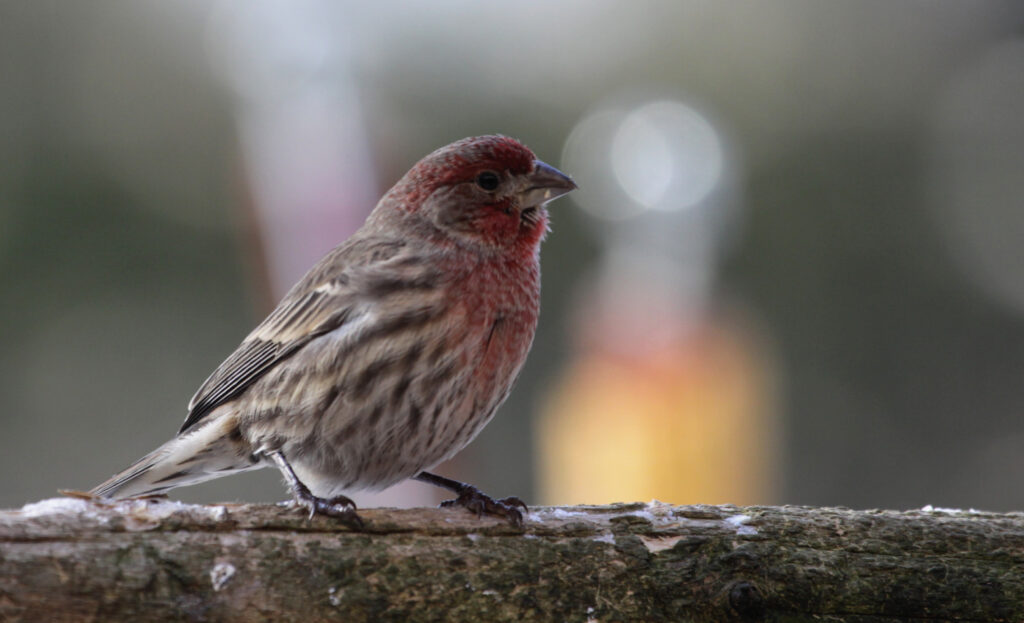
The House Finch (Haemorhous mexicanus) is a small to medium-sized bird, measuring around 5 – 6 inches (13 – 15 cm) in length and weighing around 0.5 – 0.7 ounces (15 – 20 grams).
The wingspan of a House Finch is around 7 – 8 inches (18 – 20 cm).
They have a reddish-orange plumage on the head, breast, and rump, with brownish streaking on the back and wings.
They have a conical bill and a short tail.
The male has a bright red plumage, while the female is a duller red-brown color.
They have a distinctive red plumage on the head, breast, and rump, which can help to easily identify them.
Both sexes of House Finches have brown-streaked coloring on the head and breast.
It was originally only found in western states, but it was introduced to eastern states and has thrived, even displacing the Purple Finch.
The best areas to search for them are in public spaces such as parks, farms, woodland borders, and backyards with bird feeders.
They congregate in large, loud groups that are difficult to overlook.
Thistle, cactus, cherries, apricots, plums, strawberries, blackberries, and figs are among the seeds, blooms, and fruit they eat.
To increase the number of House Finches at your backyard feeders, try using black oil sunflower seeds and nyjer seeds in tubes or platform feeders.
Below are the characteristics of the House Finch,
| Scientific Name | Haemorhous mexicanus |
| Length | 5.5 – 6.7 inches (14 – 17 cm) |
| Weight | 0.7 – 1.1 oz (20 – 30 g) |
| Wingspan | 8.7 – 10.2 inches (22 – 26 cm) |
| Habitat | urban areas, forests, and grasslands |
| Food | seeds, fruits, and insects |
| Nesting | trees, shrubs, and building eaves |
| Behavior | found in flocks and known for their friendly, approachable behavior |
10. Gray Catbird
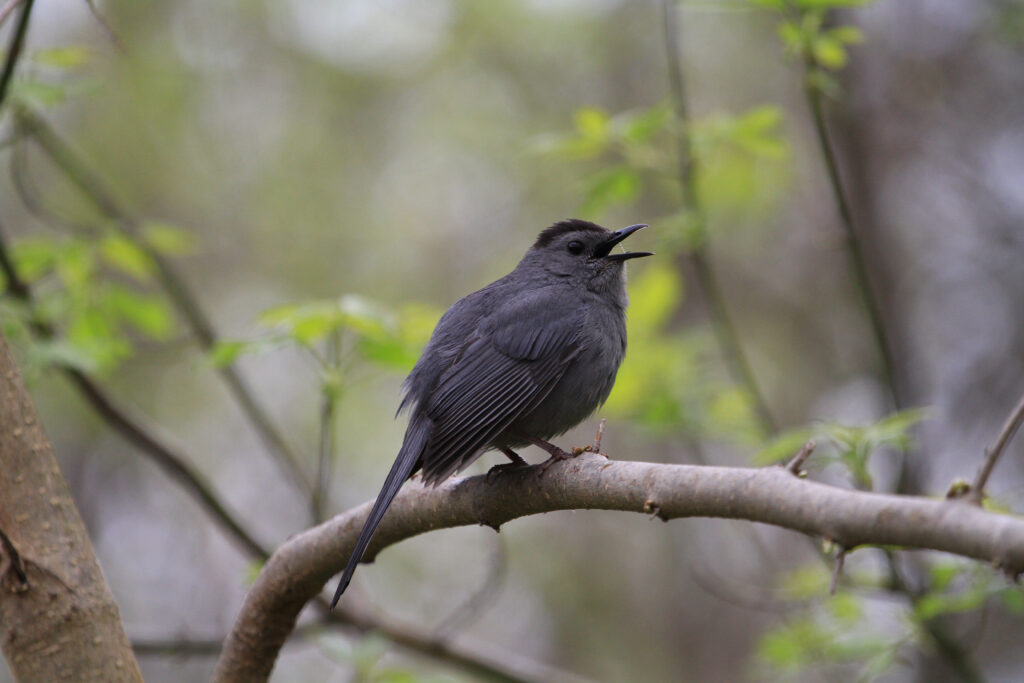
The Gray Catbird (Dumetella carolinensis) is a medium-sized bird, measuring around 9 – 11 inches (23 – 28 cm) in length and weighing around 1.4 – 1.8 ounces (40 – 50 grams).
The wingspan of a Gray Catbird is around 12 – 14 inches (30 – 36 cm).
They have slate-gray plumage, a black cap, and a rust-colored undertail.
They have a long tail, a thin bill, and a distinctive black cap.
They have a distinctive gray plumage with a black cap, which can help to easily identify them.
Gray Catbirds get their name from their long-lasting catty mew sound.
They’re medium-sized songbirds with slate grey plumage, blackhead and tail, and a scarlet spot underneath their tails.
When they migrate to the Caribbean and West Indies, Gray Catbirds may be seen breeding over much of North America except for the Pacific Coast and Interior along the West and Southwest. Along the Atlantic Coast, some linger all year.
Gray Catbirds can be found in thick bushes, tiny trees, forest margins, and hedgerows, among other places.
Your backyard feeders will be more successful if you plant fruit trees or bushes such as dogwood, winterberry, and serviceberries.
After a successful breeding season in Pennsylvania, Gray Catbirds migrate southward during the winter months.
Below are the characteristics of the Gray Catbird,
| Scientific Name | Dumetella carolinensis |
| Length | 9.4-11 inches (24-28 cm) |
| Weight | 1.4-1.8 oz (40-50 g) |
| Wingspan | 10-12 inches (25-30 cm) |
| Habitat | woodlands, thickets, and suburban gardens |
| Food | insects, fruits, and berries |
| Nesting | shrubs, trees, and thickets |
| Behavior | Often found alone or in pairs |
11. Dark-eyed Junco

The Dark-eyed Junco (Junco hyemalis) is a small to medium-sized bird, measuring around 6 – 7 inches (15 – 18 cm) in length and weighing around 0.9 – 1.4 ounces (25 – 40 grams).
The wingspan of a Dark-eyed Junco is around 8 – 10 inches (20 – 25 cm).
They have a gray-brown or gray-black upper body with a white belly and a rusty-colored tail.
They have a short, conical bill and a distinctive white belly.
They have dark eyes and a dark mask around the eye, which can help to easily identify them.
Dark-eyed Juncos are sparrows with varying hues depending on where they live.
In the east, they’re slate-colored, whereas, in the west, they’re black, white, or brown.
In the west and the Appalachian Mountains, some people live there all year.
Breeding birds from Canada and Alaska travel south to most of the United States in the winter.
They are ubiquitous over the continent and may be found in open and somewhat forested regions, usually on the ground.
If you want to attract more Dark-eyed Juncos to your backyard feeders you can use a range of seeds, such as black oil sunflower seeds, and nyjer.
The finest feeders are those that are spread out on a platform or dispersed on the ground.
Dark-eyed Juncos can be observed throughout the year in Pennsylvania, although they are more numerous in the winter.
Below are the characteristics of the Dark-eyed Junco,
| Scientific Name | Junco hyemalis |
| Length | 6.3 – 6.7 inches (16 – 17 cm) |
| Weight | 0.7 – 1.1 oz (20 – 30 g) |
| Wingspan | 7.9 – 9.8 inches (20 – 25 cm) |
| Habitat | coniferous and deciduous forests, alpine tundra, and scrublands |
| Food | seeds and insects |
| Nesting | depression lined with moss or grasses |
| Behavior | Often found in flocks and known for their secretive behavior |
12. Black-capped Chickadee
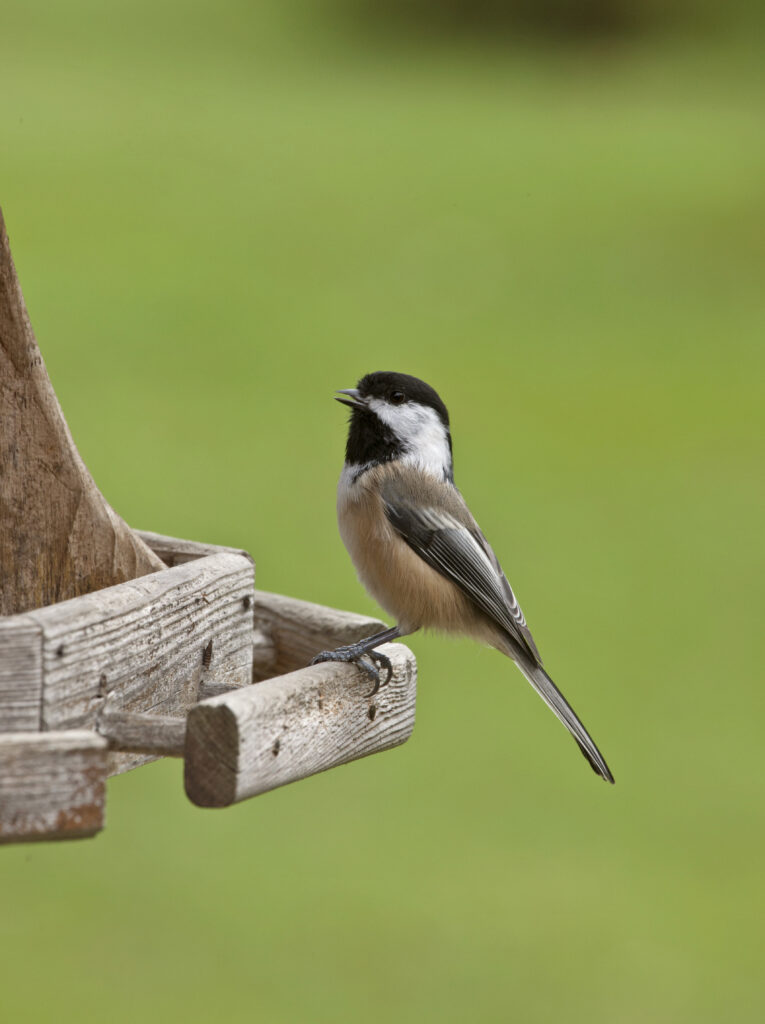
The Black-capped Chickadee is a small bird, measuring around 4 – 5 inches (10 – 13 cm) in length and weighing around 0.5 – 0.6 ounces (14 – 17 grams).
The wingspan of a Black-capped Chickadee is around 6 – 7 inches (15 – 18 cm).
They have a distinctive black cap and bib, a white face, and a gray back and wings.
They have a short, conical bill and a short tail.
They have a distinctive black cap, which can help to easily identify them.
These birds will cheerfully feed on your garden feeders and examine everything, including you!
They have grey backs, wings, and tails with black caps and beaks.
They have white cheeks and grey backs, wings, and tails.
Among their favorite foods are suet, sunflower seeds, and peanut butter.
They’ll eat off your hand if you give them something to eat.
Seeds, berries, insects, spiders, and suet are common foods for black-capped chickadees.
Forests, open woodlands, and parks all have them.
They’ll even eat from your hand, and they’re usually the first to notice new feeders.
They’ll utilize nest boxes as well, especially if they’re filled with wood shavings.
Below are the characteristics of the Black-capped Chickadee,
| Scientific Name | Poecile atricapillus |
| Length | 4.3 – 5 inches (11 – 13 cm) |
| Weight | 0.4 – 0.6 oz (12 – 16 g) |
| Wingspan | 7 – 8 inches (18 – 20 cm) |
| Habitat | coniferous and deciduous forests |
| Food | seeds, insects, and spiders |
| Nesting | cavities, including holes in trees, buildings, and birdhouses |
| Behavior | found in small flocks and known for their friendly |
13. Barn Swallow
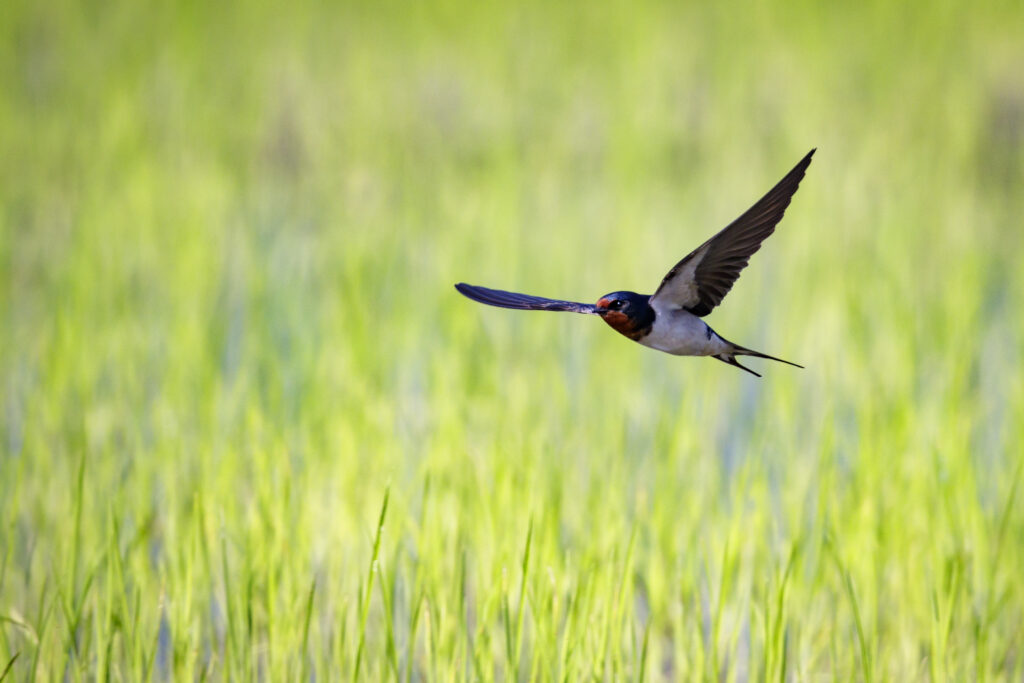
The Barn Swallow (Hirundo rustica) is a medium-sized bird, measuring around 7 – 8 inches (18 – 20 cm) in length and weighing around 0.7 – 1.1 ounces (20 – 30 grams).
The wingspan of a Barn Swallow is around 11 – 13 inches (28 – 33 cm).
Dark blue wings and tail with a reddish-brown underside and across the face distinguish Barn Swallows from other sparrows.
Long outer feathers form a deep fork in the tail.
They breed over the majority of North America before migrating to Central and South America to breed.
They are commonly seen soaring over meadows, farms, and fields in search of insects, and they make mud nests in man-made buildings such as barns.
If you want to attract more Barn Swallows, put up nest boxes or cups, and they may consume ground-up eggshells on a feeder platform.
Below are the characteristics of the Barn Swallow,
| Scientific Name | Hirundo rustica |
| Length | 5.5 – 7 inches (14 – 18 cm) |
| Weight | 0.4 – 0.7 oz (12 – 20 g) |
| Wingspan | 11 – 13 inches (28 – 34 cm) |
| Habitat | open country, fields |
| Food | insects, including flies, beetles, and mosquitoes |
| Nesting | barns, sheds, and underbridges |
| Behavior | aerial feeding behavior and acrobatic flight patterns |
14. Common Yellowthroat

The Common Yellowthroat (Geothlypis trichas) is a small bird, measuring around 4 – 5 inches (10 – 13 cm) in length and weighing around 0.4 – 0.5 ounces (11 – 14 grams).
The wingspan of a Common Yellowthroat is around 6 – 7 inches (15 – 18 cm).
They have a distinctive yellow throat and breast, a rust-colored crown, and a brown back and wings.
They have a short, conical bill and a short tail.
They have a distinctive yellow throat, which can help to easily identify them.
They breed over most of North America and may be found in marshy or wetland regions, brushy fields, and thick, tangled vegetation in the spring and summer.
They consume primarily insects and can be found in vast, densely vegetated backyards.
Below are the characteristics of the Common Yellowthroat,
| Scientific Name | Geothlypis trichas |
| Length | 4.3 – 5 inches (11 – 13 cm) |
| Weight | 0.3 – 0.4 oz (9 – 11 g) |
| Wingspan | 7 – 8 inches (18 – 20 cm) |
| Habitat | wetland, marshes, and other areas with dense vegetation |
| Food | Feeds on a variety of insects, spiders, and occasionally seeds |
| Nesting | tall grasses, shrubs, and reeds |
| Behavior | secretive |
15. Hairy Woodpecker

The Hairy Woodpecker (Picoides villosus) is a medium-sized woodpecker that is commonly found in North America.
The Hairy Woodpecker is approximately 7 – 9 inches (17 – 23 cm) in length and weighs between 1.4 – 3 oz (40 – 85 g).
The wingspan of the Hairy Woodpecker is 13 – 16 inches (33 – 41 cm).
Hairy woodpeckers will be found in much of North America.
They are largely black and white, with only an occasional flash of pink at the back of their head.
They have a somewhat longer beak and are significantly bigger than the Downy Woodpecker.
They’re located in big trees and maybe heard tapping if you pay attention.
An insect-eating bird in the eastern United States, the Hairy Woodpecker feeds largely on wood-boring beetle larvae.
As well as suet feeders, you can also add black oil sunflower seeds and peanuts to your yard to attract more Hairy Woodpeckers during colder months.
In Pennsylvania, Hairy Woodpeckers are more prevalent in the winter, especially around suet feeders.
Below are the characteristics of the Hairy Woodpecker,
| Scientific Name | Leuconotopicus villosus |
| Length | 7.5 – 10 inches (19 – 25 cm) |
| Weight | 2.1 – 3.4 oz (60 – 96 g) |
| Wingspan | 13 – 16 inches (33 – 41 cm) |
| Habitat | coniferous and deciduous forests |
| Food | insects, including wood-boring beetles and ants, as well as fruits and berries |
| Nesting | cavities, including holes in trees, buildings, and birdhouses |
| Behavior | distinctive drumming behavior |
16. House Wren

House Wren (Troglodytes aedon) is a small songbird that is commonly found in North America, Central America, and parts of South America.
The House Wren is approximately 4.5 – 5 inches (11.5 – 13 cm) in length and weighs between 0.3 – 0.5 oz (8 – 13 g).
The wingspan of the House Wren is 7.5 – 9 inches (19 – 23 cm).
Small brown birds with darker banded wings and tails and a lighter neck, House Wrens are unremarkable.
Before traveling to the extreme south and Mexico for the winter, they breed in the majority of states.
They’re frequently seen jumping over tangles and low branches with their tails raised, occasionally pausing to sing their joyful song.
This little bird is aggressive when it comes to nesting, and will often battle larger birds to take eggs or nestlings from a nesting place they want.
By leaving brush piles or erecting a nest box in your backyard, you might attract more House Wrens.
Below are the characteristics of the House Wren,
| Scientific Name | Troglodytes aedon |
| Length | 4.3 – 5.1 inches (11 – 13 cm) |
| Weight | 0.4 – 0.7 oz (12 – 20 g) |
| Wingspan | 7.5 – 8.7 inches (19 – 22 cm) |
| Habitat | woodlands, gardens, and suburban areas |
| Food | insects, spiders, and occasionally fruit and berries |
| Nesting | birdhouses, boxes, and natural cavities |
| Behavior | active and curious |
17. Indigo Bunting

House Wren (Troglodytes aedon) is a small songbird that is commonly found in North America, Central America, and parts of South America.
House Wren is approximately 4.5 – 5 inches (11.5 – 13 cm) in length and weighs between 0.3 – 0.5 oz (8 – 13 g).
The wingspan of the House Wren is 7.5 – 9 inches (19 – 23 cm).
Indigo Buntings are tiny birds with brilliant blue males and brown females with black streaks on their wings and tails.
For the winter, they travel from their breeding grounds in eastern North America to Florida, Central and South America, and the Caribbean.
Indigo Buntings can be seen feeding on seeds and insects in weedy fields and shrubby places.
Small seeds like nyjer and thistle might help you attract more to your yard.
Below are the characteristics of the Indigo Bunting,
| Scientific Name | Passerina cyanea |
| Length | 5 – 5.5 inches (13 – 14 cm) |
| Weight | 0.5 – 0.7 oz (14 – 20 g) |
| Wingspan | 7.5 – 9 inches (19 – 23 cm) |
| Habitat | woodlands, fields, and gardens |
| Food | seeds, fruits, and insects |
| Nesting | shrubs, trees, and thickets |
| Behavior | active, acrobatic foraging |
18. Chipping Sparrow

Chipping Sparrow (Spizella passerina) is a small, brown, and gray bird that is commonly found in open woodlands and grasslands in North America.
The length of the Chipping Sparrow is typically around 4.7 inches (12 cm) and it weighs around 0.4 ounces (11 g).
The wingspan of the bird is around 7.5 inches (19 cm).
Chipping Sparrows have a long, thin tail, a redhead, a black eye-line, a grey belly, and a brown and black-streaked back.
The hues are more muted in the winter.
They reproduce over the majority of North America and Canada before flying to Mexico, Florida, or further south, where they spend the whole year.
They may be seen in small groups on open land, and they will visit backyards in search of various types of bird seed.
Below are the characteristics of the Chipping Sparrow,
| Scientific Name | Spizella passerina |
| Length | 5 – 5.5 inches (13 – 14 cm) |
| Weight | 0.4 – 0.5 oz (12 – 15 g) |
| Wingspan | 7.5 – 8.5 inches (19 – 22 cm) |
| Habitat | woodlands, grasslands, and suburban gardens |
| Food | seeds, insects, and spiders |
| Nesting | shrubs, trees, and building eaves |
| Behavior | active foraging behavior |
19. American Goldfinch

The American Goldfinch’s scientific name is Spinus tristis.
It is a small, brightly colored finch that is commonly found in wooded areas, gardens, and meadows throughout most of North America.
The American Goldfinch is typically around 4.3 – 5.1 inches (11 – 13 cm) in length and weighs around 0.4 – 0.5 ounces (11 – 14 g).
The wingspan of the bird is around 7.5 – 8.7 inches (19 – 22 cm).
The males of American Goldfinches have a brilliant yellow and black coloration in the spring.
In the winter, ladies and males are both a drab brown color.
American Goldfinches breed in the far north and in Canada before moving to the south, where they spend the whole year.
They forage for sunflower, thistle, and aster plants in weedy fields and overgrown places.
They’re also prevalent in parks, backyards, and suburbia.
Thistles and milkweed in your yard attract more American Goldfinches.
They will come to most bird feeders, and they like sunflower and nyjer seed.
American Goldfinches breed in Pennsylvania before flying south for the winter.
Below are the characteristics of the American Goldfinch,
| Scientific Name | Spinus tristis |
| Length | 4.3-5.5 inches (11-14 cm) |
| Weight | 0.4-0.7 oz (12-20 g) |
| Wingspan | 7-8.5 inches (18-22 cm) |
| Habitat | woodlands, fields, and suburban gardens |
| Food | seeds, fruits, and insects |
| Nesting | shrubs, trees, and building eaves |
| Behavior | flocks and known for their active foraging behavior |
20. White-breasted Nuthatch

The White-breasted Nuthatch’s scientific name is Sitta carolinensis.
It is a small, plump bird with a short tail and a sharp, straight bill.
They are mostly blue-gray in color with a white belly, a black crown, and a white stripe above the eye.
They are commonly found in wooded areas and can be seen climbing up and down tree trunks headfirst.
he White-breasted Nuthatch typically measures around 4.3 – 5 inches (11 – 13 cm) in length and weighs around 0.4 – 0.5 ounces (11 – 14 g).
The wingspan of the bird is around 7.5 – 8.7 inches (19 – 22 cm).
White-breasted Nuthatches are small, energetic birds with a grey-blue back and white face and belly, as well as a black crown.
There’s often a chestnut color to their lower belly and tail.
They’re common in deciduous woods, woodland borders, parks, and yards with trees, as well as at bird feeders.
White-breasted Acorns, hawthorns, sunflower seeds, and maize crops are among the seeds and nuts eaten by nuthatches.
They bury big nuts and acorns in tree bark and then bash them open with their bills to get the seed out.
White-breasted Nuthatches may flock to your garden if you provide sunflower seeds and peanuts in tube feeders or suet feeders, which will attract them.
Below are the characteristics of the White-breasted Nuthatch,
| Scientific Name | Sitta carolinensis |
| Length | 4.3 – 5 inches (11 – 13 cm) |
| Weight | 0.7 – 0.9 oz (20 – 25 g) |
| Wingspan | 7 – 8 inches (18 – 20 cm) |
| Habitat | coniferous and deciduous forests, as well as suburban gardens |
| Food | seeds, insects, and spiders |
| Nesting | holes in trees, buildings, and birdhouses |
| Behavior | ability to climb up and down tree trunks and branches |
21. Red-Winged Blackbirds
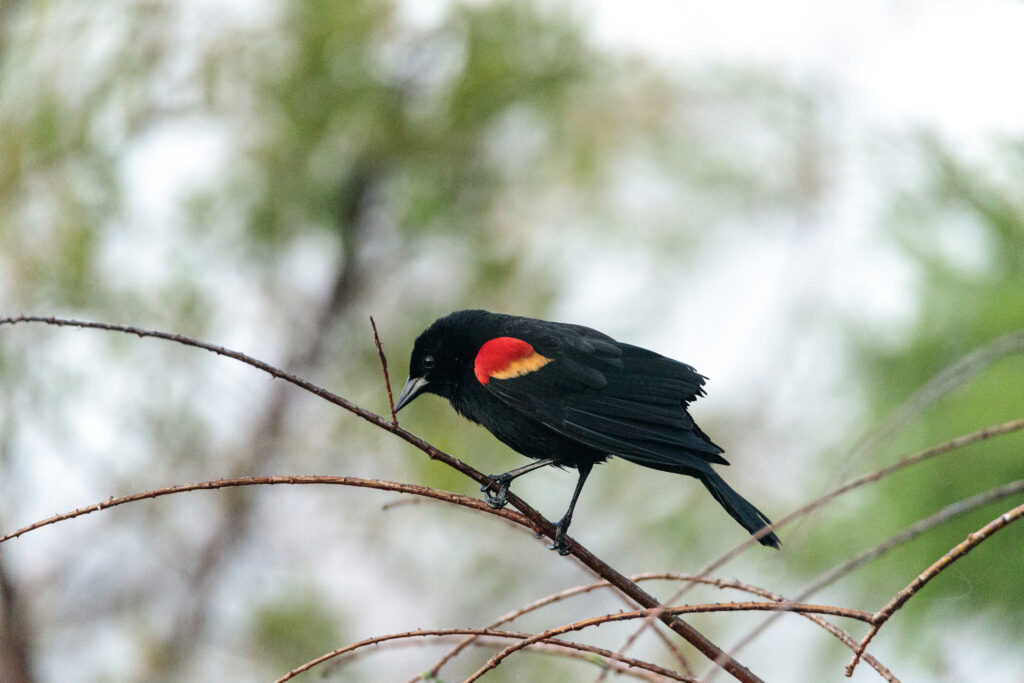
Red-winged Blackbird (Agelaius phoeniceus) is a large, black bird with a bright red and yellow patch on its wing.
The Red-winged Blackbird typically measures around 8.5 – 9.8 inches (22 – 25 cm) in length and weighs around 1.2 – 1.8 ounces (34 – 50 g).
The wingspan of the bird is around 12 – 15 inches (30 – 38 cm).
They are common in wetlands and marshes, as well as in fields and along roadsides throughout most of North America.
With all-black coloration saves for the brilliant red and yellow shoulder patches, red-winged blackbirds are highly abundant and easy to see.
In contrast to the brown streaky coloration of the males, the females are very drab.
Red-winged Blackbirds are found across the United States; however, they may travel south after breeding in the far north.
They are frequently seen perched on telephone lines, and during the mating season, the males will fiercely protect their territory, even striking anyone who approaches nests too close.
Spread mixed grain and seeds on the ground to attract more Red-winged blackbirds to your garden.
They’ll eat huge tube feeders or platform feeders as well.
Below are the characteristics of the Red-Winged Blackbirds,
| Scientific Name | Agelaius phoeniceus |
| Length | 7 – 9 inches (18 – 23 cm) |
| Weight | 1.1 – 1.5 oz (30 – 42 g) |
| Wingspan | 12 – 15 inches (30 – 38 cm) |
| Habitat | marshes, wet meadows, and agricultural fields |
| Food | insects, spiders, and seeds |
| Nesting | reeds, cattails, and bushes |
| Behavior | territorial |
22. White-throated Sparrow

White-throated Sparrow (Zonotrichia albicollis) is a small, gray, and brown bird with a white throat, a yellow patch above the eye, and a distinctive black and white head pattern.
The White-throated Sparrow typically measures around 6.3 – 7 inches (16 – 18 cm) in length and weighs around 0.8 – 1.1 ounces (23 – 31 g).
The wingspan of the bird is around 8.7 – 10 inches (22 – 25 cm).
It is commonly found in woodlands, brushy areas, and gardens in North America, particularly in the eastern part of the continent.
White-throated Sparrows have a black and white striped head, a brilliant white throat, and yellow between the eye and the beak.
They have brown backs and grey underbelly.
They are migratory birds that nest mostly in Canada before migrating to the eastern and southern United States, as well as California, in the winter.
White-throated Sparrows can be seen on the ground in big flocks in wooded areas and along the borders.
Below are the characteristics of the White-throated Sparrow,
| Scientific Name | Zonotrichia albicollis |
| Length | 6 – 6.5 inches (15 – 17 cm) |
| Weight | 1 – 1.3 oz (28 – 37 g) |
| Wingspan | 8 – 9 inches (20 – 23 cm) |
| Habitat | woodlands, fields, and suburban gardens |
| Food | Feeds on a variety of seeds, fruits, and insects |
| Nesting | ground, often in a depression lined with moss or grasses |
| Behavior | Often found in flocks |
23. Common Grackle

Common Grackle (Quiscalus quiscula) is a large, glossy, iridescent black bird with a long tail and a long, keel-shaped bill.
It is commonly found in a variety of habitats including wetlands, urban areas, and farmland in North America.
The Common Grackle typically measures around 11 – 12 inches (28 – 30 cm) in length and weighs around 2.5 – 3.5 ounces (70 – 100 g).
The wingspan of the bird is around 16 – 18 inches (41 – 46 cm).
The Common Grackle is a blackbird with a glossy iridescent body that is taller and longer-tailed than other blackbirds.
They eat a variety of crops, but primarily corn, and congregate in noisy groups high in the trees.
They will also consume trash, making them a nuisance. Open woods, marshes, parks, and fields are among their many habitats.
In the winter, they may congregate in the millions to feed and roost alongside other blackbird species.
The Common Grackle spends the entire year in much of the east and the entire southeast but migrates south after mating in the extreme north and west of its range.
It is possible to increase the number of Common Grackles that visit your garden by spreading mixed grain and seed on the ground or on feeder platforms.
Below are the characteristics of the Common Grackle,
| Scientific Name | Quiscalus quiscula |
| Length | 11 – 12 inches (28 – 30 cm) |
| Weight | 3.1 – 4.3 oz (88 – 122 g) |
| Wingspan | 16 – 20 inches (41 – 51 cm) |
| Habitat | marshes, wet meadows, and agricultural fields |
| Food | insects, spiders, seeds, fruits, and even small fish and snails |
| Nesting | trees, shrubs, and buildings |
| Behavior | gregarious and often found in large flocks |
24. Carolina Chickadee

Carolina Chickadee (Poecile carolinensis) is a small, plump bird with a black cap and bib and a white face.
It is commonly found in wooded areas, gardens, and parks in the southeastern United States, specifically in the states of Georgia, South Carolina, and North Carolina.
The Carolina Chickadee typically measures around 4.3 – 5 inches (11 – 13 cm) in length and weighs around 0.3 – 0.4 ounces (8 – 11 g).
The wingspan of the bird is around 7 – 8 inches (18 – 20 cm).
Carolina Chickadees have big heads, blackcaps and necks, white cheeks and bellies, and silky grey backs, wings, and tails.
They have a lot in common with the Black-capped Chickadee in terms of appearance, and they interbreed where their ranges intersect.
Black oil sunflower seeds, Nyjer seeds, suet feeders, or peanuts can all be used to attract additional Carolina Chickadees to your backyard feeders.
Tube feeders, suet cages, and platform feeders are all acceptable sources of food for them. They will also build their nests in nest boxes or tubes.
Below are the characteristics of the Carolina Chickadee,
| Scientific Name | Poecile carolinensis |
| Length | 4.3-5 inches (11-13 cm) |
| Weight | 0.3-0.5 oz (9-14 g) |
| Wingspan | 7-8 inches (18-20 cm) |
| Habitat | woodlands, including coniferous and deciduous forests, as well as suburban gardens |
| Food | seeds, insects, and spiders |
| Nesting | trees, buildings, and birdhouses |
| Behavior | friendly, approachable |
25. Red-bellied Woodpeckers

Red-bellied Woodpecker (Melanerpes carolinus) is a medium-sized woodpecker with a distinctive red head and belly, and a black and white barred back.
It is commonly found in wooded areas, gardens, and parks throughout the eastern United States and parts of Canada.
The Red-bellied Woodpecker typically measures around 9 – 10 inches (23 – 25 cm) in length and weighs around 2.5 – 3.5 ounces (70 – 100 g).
The wingspan of the bird is around 15 – 16 inches (38 – 41 cm).
With a pale red belly, a red crown and neck, and a black-and-white striped back, Red-bellied Woodpeckers can be difficult to detect.
They have a loud cry in the spring and summer and may be found in woodlands and forests, particularly in eastern states where there is deadwood.
Insects and spiders are the major foods of Red-bellied Woodpeckers, although they also consume acorns, nuts, and pine cones, as well as certain seeds and fruits.
Suet feeders will attract more Red-bellied Woodpeckers, and they will occasionally eat from hummingbird feeders.
In the winter, Red-bellied Woodpeckers are more numerous in Pennsylvania.
Below are the characteristics of the Red-bellied Woodpeckers,
| Scientific Name | Melanerpes carolinus |
| Length | 9 – 10 inches (23 – 26 cm) |
| Weight | 2.4 – 3 oz (70 – 85 g) |
| Wingspan | 13 – 15 inches (33 – 38 cm) |
| Habitat | deciduous and mixed forests, as well as suburban gardens |
| Food | insects, fruits, and berries |
| Nesting | holes in trees, buildings, and birdhouses |
| Behavior | oud drumming behavior |
Check out this article on Birds of Prey in Pennsylvania.
Conclusion
This article depicts all of Pennsylvania’s backyard birds at various times of the year.
This article also describes the birds you could observe in your yard and when they’re most active.
To help you recognize the most common backyard birds, we’ve included photos and descriptions.
To conclude, these are the most common birds in Pennsylvania,
- Blue Jay
- Northern Cardinal
- Mourning Dove
- Song Sparrow
- American Robin
- American Crow
- Tufted Titmouse
- European Starling
- House Finch
- Gray Catbird
- Dark-eyed Junco
- Black-capped Chickadee
- Barn Swallow
- Common Yellowthroat
- Hairy Woodpecker
- House Wren
- Indigo Bunting
- Chipping Sparrow
- American Goldfinch
- White-breasted Nuthatch
- Red-winged Blackbirds
- White-throated Sparrow
- Common Grackle
- Carolina Chickadee
- Red-bellied Woodpeckers
FAQ
What are some common bird species found in Pennsylvania?
Some of the most common bird species found in Pennsylvania include the Eastern Bluebird, American Goldfinch, Baltimore Oriole, and the Tufted Titmouse. Other species commonly seen in the state include the Eastern Wood-Pewee, American Redstart, and the Wood Duck.
Where is the best place to go birdwatching in Pennsylvania?
Some of the best places for birdwatching in Pennsylvania include the Delaware Water Gap, the Poconos, and the Allegheny National Forest. Other popular birdwatching spots include the John Heinz National Wildlife Refuge, the Hawk Mountain Sanctuary, and the Middle Creek Wildlife Management Area.
What time of year is the best for birdwatching in Pennsylvania?
The best time for birdwatching in Pennsylvania is during the spring and fall migration seasons, when many species of birds are passing through the state. Many bird species can also be observed during the breeding season, which occurs from April through June.
What should I bring on a birdwatching trip in Pennsylvania?
When going on a birdwatching trip in Pennsylvania, it’s important to bring binoculars, a field guide, a notebook, and a camera. It’s also recommended to bring sunscreen, insect repellent, and a hat. A comfortable pair of shoes or hiking boots is also a good idea, as some birdwatching spots may be difficult to access.
Can I feed the birds in Pennsylvania?
It is not recommended to feed wild birds in Pennsylvania, as it can disrupt their natural feeding habits and attract unwanted animals such as raccoons and squirrels. If you want to feed birds, you can put up a bird feeder and fill it with seed and suet, preferably during the winter when the food resources are scarce.
Last Updated on March 22, 2023 by Lily Aldrin

Thanks Lily for the excellent article. Is very helpful to me as a visitor to PA.